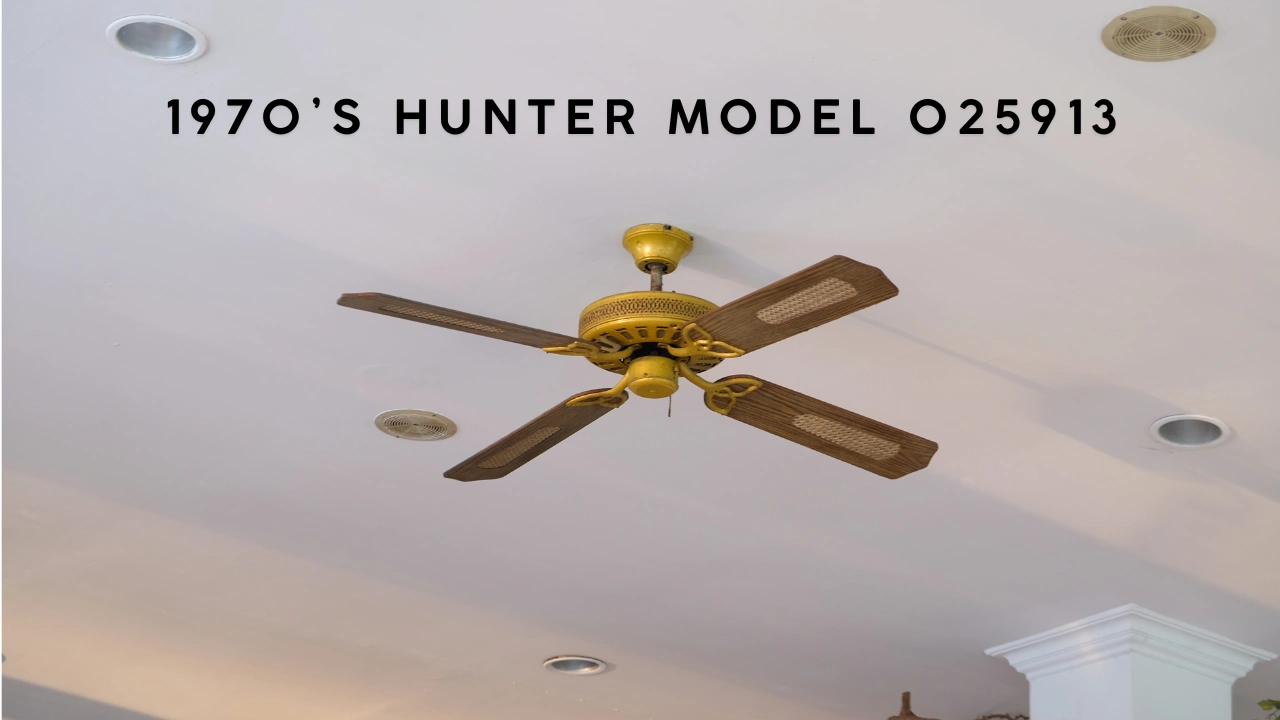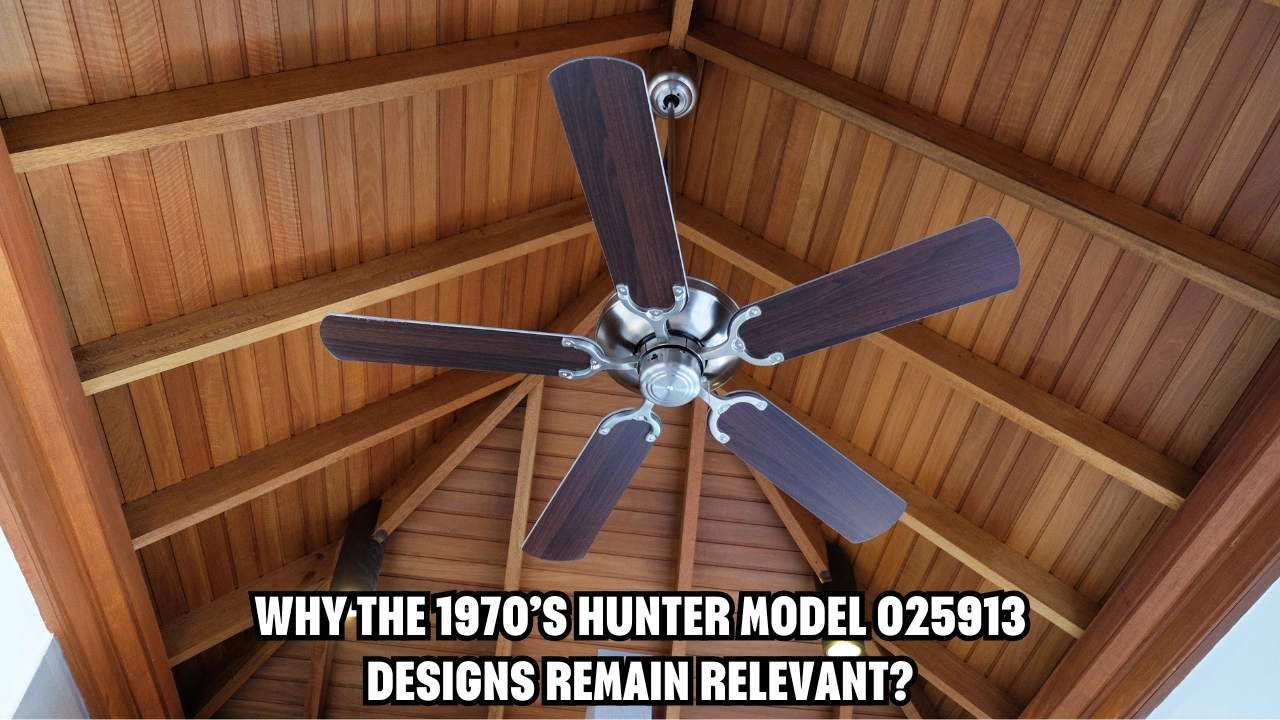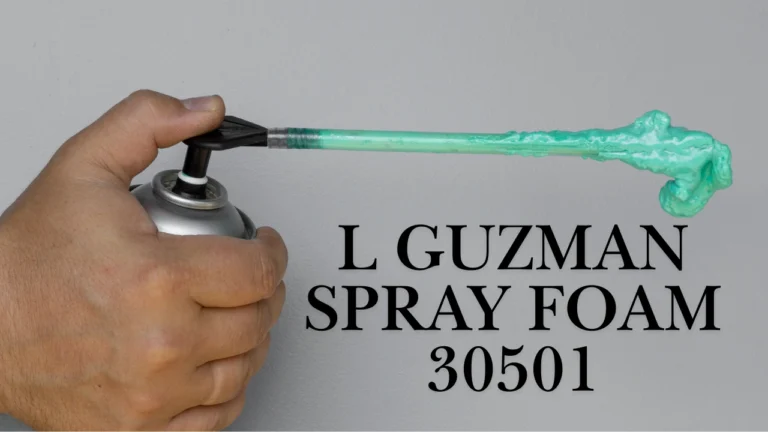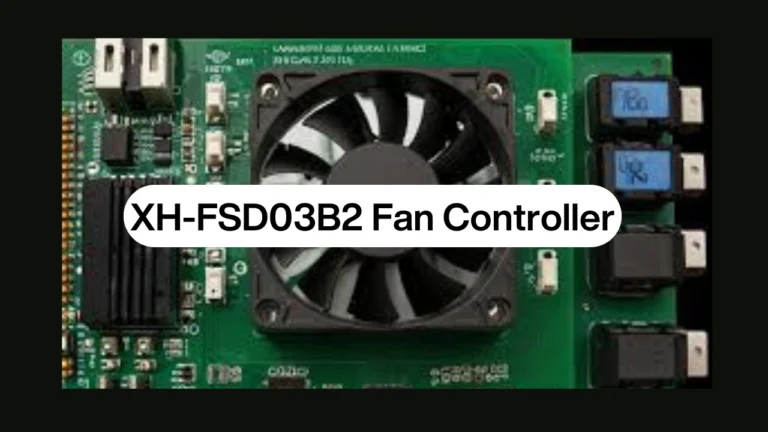The 1970’s Hunter Model 025913: Vintage Style Meets Durability

The 1970’s Hunter Model 025913 stands out as a hallmark of engineering excellence from an era when durability, performance, and aesthetics were paramount. This vintage ceiling fan not only captured the hearts of its users but also set the standard for modern fan design. Its legacy endures, making it an iconic symbol of quality and functionality.
What is the 1970’s Hunter Model 025913?
The Hunter Fan Company introduced the 1970’s Hunter Model 025913 during a time when ceiling fans were gaining renewed attention as an efficient cooling solution. With energy conservation becoming a priority during the 1970s, this model emerged as a reliable alternative to air conditioning systems. Its robust design and energy-efficient operation made it a favorite in households, offices, and public spaces.
Also Read: L Guzman Spray Foam 30501 Key Solution for Home Insulation
Unmatched Durability
What truly set the 1970’s Hunter Model 025913 apart was its durability. Built with high-quality metals and premium wooden blades, it was designed to withstand the test of time. Decades later, many of these fans are still operational, a testament to the meticulous craftsmanship of the era. Its motor, one of the strongest in its category, was engineered for consistent performance even under prolonged use.
Exploring the Designs of the 1970’s Hunter Model 025913
It stands out not only for its efficiency and durability but also for its iconic designs. This vintage ceiling fan, crafted with precision and attention to detail, comes in a variety of styles that cater to diverse aesthetic preferences. Each design element of the fan reflects the elegance and functionality of the era, making it a timeless choice for homeowners and collectors alike.
Timeless Wooden Blade Finishes of the 1970’s Hunter Model 025913
The wooden blades of the 1970’s Hunter Model 025913 are one of its most admired features. These blades, available in classic finishes like walnut, teak, and oak, added a natural touch to the fan’s overall appearance. The walnut finish was a favorite for traditional interiors, while the lighter teak finish complemented mid-century modern spaces. The oak finish offered a versatile option that worked well in both contemporary and vintage settings. Each blade was unique due to the natural grain of the wood, enhancing the fan’s individuality.
Metallic Motor Casings: Durable and Stylish
The motor casing of the Hunter Model 025913 was not just a protective element but also a design statement. Available in finishes like polished chrome, antique brass, and matte black, the casing complemented the wooden blades beautifully. The polished chrome finish brought a modern, shiny aesthetic that suited minimalist interiors, while the antique brass finish offered a vintage charm perfect for classic decor. For those seeking an industrial look, the matte black option added a bold, sophisticated touch.
Blade Shapes and Sizes for Different Needs
The Hunter Model 025913 was designed with a variety of blade shapes and sizes to meet different airflow and spatial requirements. Wide blades were ideal for larger rooms, providing maximum airflow and making them popular in commercial spaces. Slim blades offered a more streamlined appearance for smaller rooms without compromising performance. Additionally, curved blades introduced a dynamic and modern design that added elegance and movement to the fan’s overall look.
Lighting Options That Add Functionality and Style
It often came with optional lighting kits, enhancing its functionality. These kits included single bowl lights for soft, ambient lighting, multiple bulb fixtures for brighter illumination, and frosted glass shades for a cozy, diffused glow. This added feature made the fan not just a cooling device but a multi-functional centerpiece in living rooms, bedrooms, and dining areas.
Color Customization and Personalization
While the original designs of the 1970’s Hunter Model 025913 were timeless, many users embraced customization to match their decor. Blades were often painted in bold or muted colors to align with interior themes. Some enthusiasts even added stenciled patterns or intricate designs to the blades for a personalized touch. Motor casings were repainted with metallic or matte finishes to give the fan a refreshed, modern look. These customizations allowed homeowners to adapt the vintage fan to contemporary spaces while preserving its unique charm.
Modern Adaptations Inspired by the 1970’s Hunter Model 025913
The designs of the 1970’s Hunter Model 025913 continue to inspire modern ceiling fans. Manufacturers have reintroduced models that mimic the aesthetic of the original, combining vintage charm with modern conveniences. These adaptations include advanced features like remote controls, energy-efficient motors, and LED lighting. Despite these updates, the essence of the original design remains intact, reflecting its enduring influence.
Why the 1970’s Hunter Model 025913 Designs Remain Relevant
The versatility of the 1970’s Hunter Model 025913 design ensures its relevance even today. Its ability to blend seamlessly with various interior styles makes it a favorite among collectors and interior designers. Whether as a functional appliance or a decorative piece, the fan continues to add value to spaces, embodying both history and practicality.

The Enduring Appeal of 1970’s Hunter Model 025913 Designs
It is more than a ceiling fan—it’s a design icon that has stood the test of time. Its elegant wooden blades, stylish metallic casings, versatile lighting options, and adaptability to modern trends make it a timeless choice. Whether restored for use or displayed as a collectible, the designs of the Hunter Model 025913 continue to captivate and inspire, proving that great design transcends eras.
Also Read: WMC SC-4002-6 Sewing In-Depth Look at Its Performance
Energy Efficiency and Performance
The fan’s energy-efficient design was revolutionary for its time. It provided powerful airflow while consuming minimal energy, making it an ideal choice for eco-conscious households. The Fan Model 025913 featured adjustable speed settings, giving users control over airflow intensity to suit their needs. Its quiet operation added to its appeal, ensuring comfort without disruption.
Maintenance and Longevity
One of the reasons for the enduring popularity of the 1970’s Hunter Model 025913 is its ease of maintenance. The fan required minimal upkeep to remain in peak condition. Regular cleaning, occasional lubrication, and timely replacement of worn-out parts were sufficient to keep it running smoothly for decades. This user-friendly maintenance approach ensured its longevity and reliability.
Collector’s Delight
Today, the 1970’s Hunter Model 025913 is a prized possession among collectors of vintage appliances. Its rarity, coupled with its historical significance, has driven up its value in auctions and specialty markets. Collectors appreciate its role in shaping the evolution of fan technology, making it a cherished artifact that symbolizes the craftsmanship of a bygone era.
Comparison: 1970’s Hunter Model 025913 vs. Modern Fans
The table below highlights how the 1970’s Hunter Model 025913 compares with modern fans, showcasing its lasting relevance:
| Feature | 1970’s Hunter Model 025913 | Modern Ceiling Fans |
|---|---|---|
| Durability | Built with heavy-duty metals and high-quality wood | Often constructed with lightweight plastic |
| Energy Efficiency | High efficiency for its era | Advanced energy-saving technology |
| Design | Timeless and elegant | Often contemporary or minimalist |
| Maintenance | Simple and user-friendly | Varies; some require professional servicing |
| Noise Levels | Quiet operation | Varies based on model and features |
| Technology | Basic speed settings | Remote controls, smart features, and more |
Restoration and Customization
For those lucky enough to own a 1970’s Hunter Model 025913, restoration projects can be highly rewarding. Enthusiasts can find replacement parts and customization options through online communities and vintage appliance specialists. From blade replacement to motor refurbishing, restoring this fan to its original glory is not only possible but also highly satisfying.
Why It Still Matters Today
It remains relevant in today’s world for several reasons. Its energy efficiency aligns with modern sustainability goals, while its timeless design adds a vintage charm to contemporary spaces. Moreover, its durability ensures it continues to function as a reliable cooling solution even decades after its creation.
Inspiration for Modern Designs
The impact of the 1970’s Fan Model 025913 extends beyond its functional role. It has inspired modern fan designs that prioritize a balance between performance and aesthetics. Manufacturers continue to look back at this iconic model as an example of what excellent design and engineering can achieve.
Also Read: Lalo 265123 A Flexible Solution for Tracking and Compliance
Conclusion
The 1970’s Hunter Model 025913 is not just a fan—it is a legacy of craftsmanship, innovation, and enduring quality. Whether admired as a collectible, restored for functional use, or appreciated for its design, this fan continues to captivate enthusiasts and collectors alike. It is a reminder of a time when appliances were built to last, and excellence was the norm.






